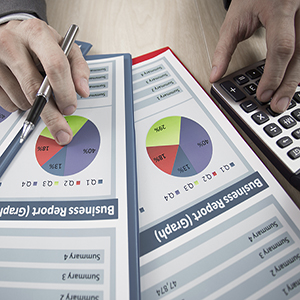Forecasting: It’s What’s Hot in Supply Chain Analytics

In the world of commerce, every business ecosystem has a type of supply chain that is critical to corporate operations. These supply chains rely on a network of plants and facilities to add value to and transform raw materials into a final product.
Better Data, Better Forecasts
The ability to effectively forecast demand is essential for supply chain management decisions. In fact, demand forecasts are used throughout the supply chain including supply chain design, purchasing, operations, inventory, and sales and marketing. In large part due to computer processing power, new advances in forecasting and the abundance of new data sources have helped to increase forecast reliability. Value-add forecasting is one way companies are now realizing incremental improvements in their forecast quality and reliability.
Over the past decade, sales and operations planning emerged as an essential element of supply chain management. It brought together sales, operations, production, and finance around a “one-number” forecast of sales potential. Companies that successfully create a one-number forecast ended up producing more revenue opportunity, reducing inefficiency and freeing up capital, they were even able to improve customer satisfaction. The payoffs were big, but they did not come easy.
Value-add forecasting delivered a superior projection by blending three disparate inputs. Historical transactions, external data about market conditions, and expert inputs from sales and marketing teams were combined into one forecast methodology. The resulting forecast helped executive management set course and the rest of the organization execute against that direction.
Combined into a statistical time series framework, planners were able to answer a number of questions like:
What is our likely performance in the next period?
What are best and worst case scenarios?
What will happen if we adjust promotional spend?
How might near-term climate or regulatory factors impact us?
- How will sales vary by product, customer segment, or channel?
So what’s the upside?
Better estimates of demand
Supply chain leaders are on a quest for a more precise estimate. Value-add forecasting brings corporate data and expertise to the table with 4% to 27% reductions in forecast error. For instance, forecasts help determine proper inventory controls to minimize overstock and out-of-stock events.
Organization Alignment
When managers have input into the number, they are more aligned with performance targets and with each other. Properly aligned goals help to integrate all the components of the supply chain (i.e. Procurement, Operations, Inventory, Sales and Marketing). It provides a centralized location for data and information creating “one version of the truth”. It also allows the organization to make better and more informed decisions.
Faster response to risk
Scenario planning helps identify outside factors that impact businesses. For example, a food processor can estimate the impact of new food safety regulation on costs and demand.
Uncovering hidden opportunity
Companies can better understand important sales drivers and take action based upon them. Sales forecasts are inherently volatile; however, modeling data can help take into account variables such as volume, cycle time, and seasonality.
Improving marketing IQ
Value-add forecasting gives marketers a “workbench” to explore the effects of different marketing campaigns. This leads to an improved understanding of product sales and how sales of groups of products behave based on historical tendencies. Analyzing and forecasting web trends, AdWords and other similar tools, increase a company’s understanding of promotional effects.
Price Optimization
Forecasting and A/B tests can help companies answer questions like “What level of price discounting, by store, is needed to move inventory with minimal margin damage?”
Understanding time horizons
Most forecast errors increase as the time horizon lengthens. Value-add forecasting helps detect the useful length of your “prediction window.” It can help businesses reduce obsolescence by understanding and improving life cycle management. They can also help minimize adverse effects of external causal factors by improving the understanding of the influence of external forces on supply and demand.
The promise of using statistical algorithms, forecasting and predictive analytics is coming to fruition. If you believe your company could benefit from any of these upsides, stay tuned for part two. We will cover how to get started with value add forecasting today.

About the Author
Ray Major is the Chief Strategist of Halo Business Intelligence. A data scientist, economist and statistician by training, he’s a life-long practitioner in the mysterious arts of data intelligence and analytics.
You can contact Ray by email at [email protected] and also follow him on Twitter at @majorbi
Related: What Makes an Effective Analytics Group Part of Your Supply Chain Organization?

Article Topics
Halo Business Intelligence News & Resources
Logility Acquires Halo Business Intelligence to Expand Data Visualization & Advanced Analytics Automate the Boring but Essential Parts of Your Data Warehouse The World’s Largest, Fastest, Most Agile Supply Chain How to Improve Your Receivables Position with Better Risk Analysis How to Stay Out of Cash Flow Crises Using Cash Position Analysis Supply Chain Key Performance Indicators How to Get Started with Value Add Forecasting More Halo Business IntelligenceLatest in Technology
Spotlight Startup: Cart.com is Reimagining Logistics Walmart and Swisslog Expand Partnership with New Texas Facility Taking Stock of Today’s Robotics Market and What the Future Holds Biden Gives Samsung $6.4 Billion For Texas Semiconductor Plants Apple Overtaken as World’s Largest Phone Seller Walmart Unleashes Autonomous Lift Trucks at Four High-Tech DCs Talking Supply Chain: Procurement and the AI revolution More Technology













